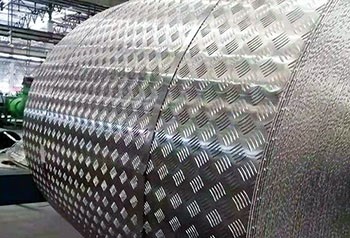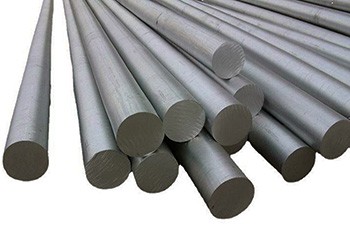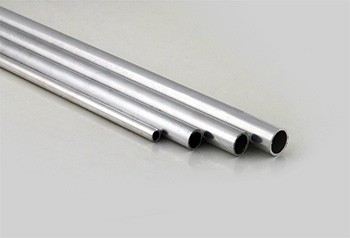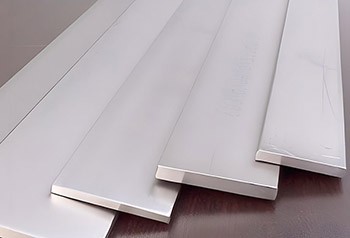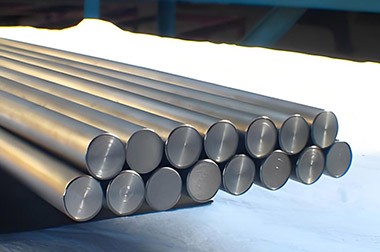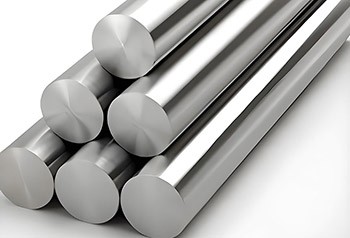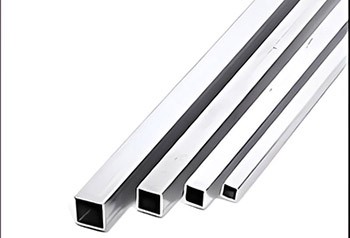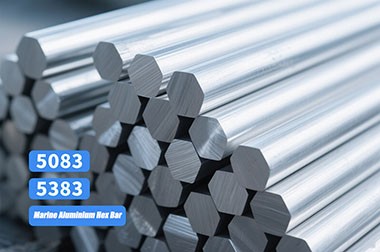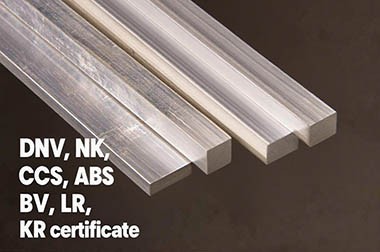Aluminum 5083 H112
5083-H112 aluminum alloy is a non-heat-treatable alloy primarily composed of aluminum, magnesium, and trace amounts of manganese and chromium. It is renowned for its excellent corrosion resistance, especially in marine and industrial environments, and retains high strength even after welding.
5083-H112 aluminum alloy is a non-heat-treatable Al-Mg-Mn alloy that has been optimized for lightweight, high strength, and corrosion resistance. In the H112 temper condition, it undergoes strain hardening through controlled thermal processing.
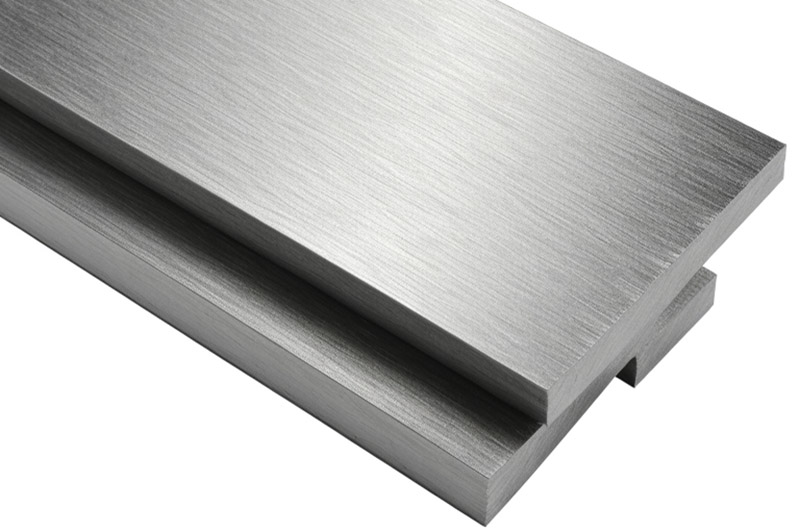
5083 H112 aluminum alloy is mainly used in shipbuilding, structural, and transportation applications. The H112 temper designation indicates that the alloy undergoes slight strain hardening during manufacturing, usually due to hot or cold working, but it does not reach specific mechanical property limits.
5083 H112 maintains excellent weldability with minimal loss of performance. Its density is 2.66 g/cm³, and its thermal conductivity is approximately 117 W/m·K, making it suitable for marine, cryogenic (as low as –195 °C), and automotive applications.
Aluminum 5083 H112 Chemical Composition
5083-H112 complies with UNS A95083 / ISO AlMg4.5Mn standards:
- Aluminum: Balance (92.4–95.6 wt%)
- Magnesium: 4.0–4.9 wt%
- Manganese: 0.4–1.0 wt%
- Chromium: 0.05–0.25 wt%
- Silicon: ≤ 0.4 wt%
- Iron: ≤ 0.4 wt%
- Titanium: ≤ 0.15 wt%
- Zinc: ≤ 0.25 wt%
- Copper: ≤ 0.10 wt%
- Others (each): ≤ 0.05 wt%; Total content ≤ 0.15 wt%
Aluminum 5083 H112 Physical Properties
- Density: 2.66 g/cm³ (0.0961 lb/in³)
- Thermal Conductivity: 117 W/m·K (typical)
- Coefficient of Thermal Expansion: 23.8 µm/m-°C (20–100 °C)
- Specific Heat Capacity: 0.9 J/g-°C
- Melting Range: 591–638 °C
Aluminum 5083 H112 Mechanical Properties
- Ultimate Tensile Strength (UTS): 300 MPa (43.5 ksi)
- Yield Strength (0.2% offset): 190 MPa (27.6 ksi)
- Elongation at Break: ~16% in 50 mm (2") specimen
- Modulus of Elasticity: 70 GPa
- Brinell Hardness: 81 HB (calculated)
- Shear Strength: ~180 MPa
- Fatigue Strength: Approximately 110 MPa
Aluminum 5083 Temper Designation H112
- H1x Series: Strain-hardened only (not heat-treated to increase strength).
- H112: Applicable to products that have been strain hardened and then subjected to thermal treatment (e.g., controlled thermal stretching) to achieve specific mechanical properties and good ductility.
Haomei Aluminum 5083 H112 Supply Forms
| Form | Description |
| Aluminum 5083 H112 Plate | Heavy gauge, often used in shipbuilding, tanks, and pressure vessels. |
| Aluminum 5083 H112 Sheet | Thinner than plate, used for panels, enclosures, and lightweight structures. |
| Aluminum 5083 H112 Coil | For continuous processing, including roll forming or stamping applications. |
| Aluminum 5083 H112 Round Bar / Rod | For structural components, shafts, and marine fittings. |
| Aluminum 5083 H112 Flat Bar | For frameworks, walkways, and reinforcement. |
| Aluminum 5083 H112 Square and Rectangular Bar | Used in construction and architectural applications. |
| Aluminum 5083 H112 Pipe / Tube (Seamless and Welded) | Often used for fluid handling in marine and industrial systems. |
| Aluminum 5083 H112 Extrusions / Profiles | Custom profiles for marine decks, structural frames, or trailers. |
Haomei Aluminum 5083 H112 Typical Specifications and Dimensions
| Form | Typical Thickness / Size Range | Length Options |
| Aluminum 5083 H112 Sheet | 0.5 mm – 6 mm | Up to 4000 mm |
| Aluminum 5083 H112 Plate | 6 mm – 200 mm+ | 2000 mm × 4000 mm / custom sizes |
| Aluminum 5083 H112 Coil | 0.5 mm – 3 mm (width up to 1600 mm) | Coil weight 1–5 tons, custom length |
| Aluminum 5083 H112 Round Bar | Ø6 mm – Ø300 mm | 3000 mm / custom cut-to-length |
| Aluminum 5083 H112 Flat Bar | 10 mm × 20 mm to 50 mm × 150 mm | 3000 mm or customized |
| Aluminum 5083 H112 Pipe / Tube | OD: 10 mm – 300 mm; wall thickness as needed | 3000 mm or per project requirements |
| Aluminum 5083 H112 Extruded Profiles | Custom shapes per drawing or industry standard | Up to 6000 mm |
Core Characteristics of Aluminum 5083 H112
| Core Characteristic | Description |
| Corrosion Resistance | 5083 H112 exhibits excellent corrosion resistance, particularly in marine environments and humid atmospheres. Its high magnesium content (approximately 4.0-4.9%) gives it exceptional resistance to salt spray corrosion, making it widely used in ship structures, offshore platforms, port facilities, and seawater treatment systems. It can withstand saltwater exposure for long periods without rusting or performance degradation. |
| High Strength | 5083 H112 has relatively high strength among non-heat-treatable aluminum alloys, making it especially suitable for welded structures requiring high load-bearing capacity. It maintains good mechanical properties in welded zones, which is why it is commonly used for hull frameworks, deck structures, tanks, and high-pressure equipment. |
| Weldability | 5083 H112 offers excellent weldability and moderate machinability. The alloy supports various welding methods such as TIG, MIG, and resistance welding. The welding process is stable, with good forming quality and minimal risk of cracking at the weld seam. While not as easy to machine as cutting-specific alloys, conventional machining operations like turning, milling, and drilling can be performed under controlled parameters. |
| Low Temperature Performance | 5083 H112 retains excellent mechanical properties at low temperatures. Its yield strength and ductility do not decrease but may even improve under such conditions. Thus, it is especially suitable for equipment and structures operating in low or extreme cold environments, such as cryogenic storage tanks, polar transport containers, and refrigerated ship structures. |
| Compatibility with Welding Technologies | 5083 H112 offers excellent weldability, supporting not only traditional fusion welding methods but also more advanced joining technologies such as resistance spot welding and self-piercing riveting. This makes it highly versatile for lightweight structural manufacturing, especially for mixed-material joints with high reliability, minimal deformation, and strong weld seams. |
| Workability | 5083 H112 features good hot workability and moderate cold forming capability. In the annealed state, it is easy to perform bending, stamping, and other plastic forming operations, making it suitable for manufacturing large and complex structures. Although not as formable in cold conditions as pure aluminum or soft alloys, it can still handle general flanging, bending, and shallow drawing processes, ideal for medium-complexity components in mass production. |
Corrosion Resistance of Aluminum 5083 H112
5083-H112 exhibits excellent resistance to seawater and industrial chemicals due to its high magnesium content and formation of a protective oxide film. It resists pitting and crevice corrosion in marine environments and can be anodized for enhanced surface protection,
making it a primary alloy for hulls, decks, and superstructures.
Weldability of Aluminum 5083 H112
5083-H112 retains approximately 90% of its base metal strength after welding with MMA, MIG, or TIG methods. Due to its very low cracking tendency and excellent solid solution strengthening, this alloy offers superior toughness. Friction Stir Welding (FSW) can further refine its microstructure and reduce porosity, providing high-integrity welds for shipbuilding and pressure vessel fabrication.
Formability of Aluminum 5083 H112
This alloy possesses good cold forming properties (rolling, bending, stamping) and hot forming capabilities (bending at 300–450°C), with a low springback rate. Machinability is acceptable. Pre-drilling and using sharp tools are recommended to avoid work hardening during machining.
Standards and Specifications of Aluminum 5083 H112
- ASTM B209 / ASME SB209: Plate
- ASTM B928: Tubing
- EN 573-3 / EN 754-2: Chemical composition and mechanical properties
- ISO 6361: Wrought aluminum plates, strips, and sheets
- ASTM B221 – Standard for extruded bars, rods, wires, and profiles
- ASTM B210 / B241 – Seamless and welded tubes
- ASTM B209: Main standard for plate and sheet
- EN 485-2: European mechanical property specification
Typical Applications of Aluminum 5083 H112
- Marine and Shipbuilding: Hull plates, decks, bulkheads, offshore platforms
- Pressure Vessels and Storage Tanks: LNG carriers, chemical tanks
- Railway and Road Vehicles: Lightweight bodies, mining skips, railcars
- Cryogenic Equipment: LNG storage tanks and pipelines for temperatures down to -195°C
- Armor and Defense: Vehicle armor plates
- Structural Components: Bridges, building facades, architectural panels
- Offshore and Energy: Drilling platforms, wind turbine bases
| Application Fields | Description |
| Shipbuilding | 5083-H112 is widely used in shipbuilding, especially in hulls, decks, and propeller shafts, which are in direct contact with seawater. Its excellent seawater corrosion resistance and high strength allow it to effectively resist salt spray corrosion and mechanical fatigue during long-term sailing and marine operations, ensuring the stability and safety of the ship structure. Therefore, 5083-H112 has become the preferred aluminum alloy material for fast boats, warships, and ocean-going cargo ships. |
| Transportation | 5083-H112 is commonly used in the transportation industry for manufacturing automotive chassis, aircraft fuel tanks, as well as subway and light rail vehicle sheet metal shells. Its high specific strength, good weldability, and excellent corrosion resistance make it meet the lightweight design requirements while enhancing the structural stability and durability of the whole vehicle. Especially in transportation systems with long-term operation and strong vibrations, 5083-H112 significantly extends the structural life and reduces maintenance frequency. |
| Industrial Equipment | 5083-H112 is suitable for manufacturing pressure vessels, cryogenic refrigeration equipment, TV towers, and other industrial structural components requiring fire and corrosion resistance. In these applications, the material needs to withstand strength tests in high-pressure or low-temperature environments and cope with corrosion challenges from chemical media or extreme environments. 5083-H112 plays a vital role in the industrial sector by improving the safety and service life of equipment with its stable physical properties and good thermal conductivity. |
| Construction | 5083-H112 is widely used in the construction industry for drilling platform equipment, structural support components, and other load-bearing elements. Its superior strength and good processing adaptability make it suitable for manufacturing large-span brackets, wind-resistant structures, and modular components that require frequent assembly. It meets the dual demands of structural reliability and weather resistance in modern construction, especially suitable for outdoor projects or coastal facility construction in high-humidity, high-salt environments. |
5083-H112 aluminum alloy is a versatile material, ideal for shipbuilding, transportation, and cryogenic applications. It strikes a balance in strength, corrosion resistance, and weldability, making it the material of choice for harsh environments.
Aluminum 5083 H112 Manufacturing and Processing
- Weldability: Excellent weldability when using filler materials such as 5183 or 5356. Suitable for arc welding and resistance welding.
- Machinability: Due to work hardening, machinability is relatively poor and requires specialized tools.
- Formability: Medium cold workability; avoid high-strain bending in hardened states.
- Temperature Limitation: Avoid long-term use at temperatures above 65°C (149°F), but it performs well at low temperatures as low as -195°C.
Aluminum 5083 H112 vs. Other States
- H111: Lower work hardening degree than H112, with slightly lower yield strength.
- H116/H321: Higher strength but lower ductility. Better corrosion resistance, more suitable for marine underwater environments.
- O State: Annealed state with higher elongation but lower strength.
| Comparison of States | Description |
| H111 | 5083 H112 has a higher degree of work hardening compared to 5083 H111, giving it a slightly higher yield strength. While both are non-heat treated work-hardened states, 5083 H112 provides more stable mechanical properties after greater plastic processing, making it suitable for applications that require certain strength but still need good formability. On the other hand, 5083 H111, with a smaller amount of deformation, has slightly lower yield strength and is more suitable for structures requiring high formability but relatively lower strength. |
| H116 / H321 | 5083 H112 has better ductility and lower residual stress compared to 5083 H116 or H321, making it more suitable for structures that require further processing or forming. Although H116 and H321 have higher strength and superior corrosion resistance due to special processing, particularly for ship hulls and underwater structures exposed to long-term immersion in seawater, their ductility and weldability are slightly inferior to 5083 H112. Therefore, 5083 H112 has an advantage in structural flexibility and weldability. |
| O State (Annealed) | 5083 H112 is significantly stronger than 5083 O state. The O state, being fully annealed, has extremely high elongation and excellent formability, making it suitable for complex bending or deep drawing applications. However, its tensile strength and yield strength are much lower than H112. 5083 H112 provides higher structural strength while maintaining a certain level of ductility, making it suitable for medium-strength applications where load-bearing or deformation resistance is necessary. Therefore, the two states differ significantly in performance orientation, with 5083 H112 being more suitable for engineering environments that require a balance of medium strength, good formability, and weldability. |
5083-H112 combines high strength, high toughness, high weldability, and excellent corrosion resistance, making it the material of choice for high-demand structural and shipbuilding applications.
Recommended for you
-
5083 marine grade aluminum is an aluminum alloy specifically designed for use in marine environments. It is known for its excellent corrosion resistance and high strength, making it ideal for applications such as shipbuilding, hulls, offshore structures and other marine components.
-
As a trusted aluminum plate manufacturer, we specialize in producing high-quality 5083 H321 aluminum plates suitable for marine, transportation, and industrial applications.
-
Our company offers 5083-H116 aluminum plates certified by classification societies (CCS/BV/DNV), featuring excellent corrosion resistance, weldability, and medium strength. They are widely used in ship decks, hull outer plates, LNG storage tanks, and other fields.
-
5083-H111 aluminum is a non-heat-treatable strain-hardened aluminum-magnesium alloy, known for its exceptional corrosion resistance in marine and industrial environments and its ability to maintain high strength even after welding.
-
Specializing in the production of 5083 H131 aluminum plates, we offer customized production with thicknesses from 0.2 to 350mm and widths from 30 to 2600mm. Global export supported, original factory warranty, and 30-day delivery.
-
5083-H32 aluminum plate plays a key role in shipbuilding due to its excellent performance. Whether used for structural components in large vessels or critical parts of high-performance speedboats, it delivers reliable performance and long-term durability.
-
5083 O aluminum is a special state aluminum material based on 5083 aluminum alloy, formed through an annealing process.
-
5083-H22 is an aluminum-magnesium alloy plate, belonging to the 5xxx series of non-heat-treatable aluminum alloys.
-
5083 H34 is a strain-hardened and stabilized aluminum alloy in the 5000 series, known for its high strength, excellent corrosion resistance, and good weldability.
Other content readers are interested in
-
5083 marine grade aluminium checkered tread plate sheet
5083 pattern aluminum plate is widely used in decoration, shipbuilding and construction fields. Aluminum pattern plate has good forming, drilling and welding capabilities, is easy to manufacture, and its raised diamond lug pattern provides good slip resistance.
-
5083 5383 O H112 Marine Grade Aluminum Bars
5083 5383 O H112 Marine Grade Aluminum Bars are certified by CCS, DNV, NK, CCS, ABS, BV, LR, KR and other classification societies, and their quality fully complies with world marine grade standards.
-
5083 Marine Grade Aluminum Pipe Tube
5083 Marine Grade Aluminum Pipe is commonly used in various marine applications such as shipbuilding, ship construction, offshore platforms and marine structures.
-
5083 aluminum alloy flat bar is a high-performance aluminum material with magnesium as the main alloying element, specially designed for harsh environments. It is widely used in shipbuilding, pressure vessels, rail transportation, and cryogenic engineering.
-
Specialized in producing 5083 aluminum bars, offering multiple tempers such as H112 and O, supporting custom machining with outer diameters ranging from Φ15mm to 450mm. Ample stock and fast delivery.
-
5083 aluminum round bar is a high-performance corrosion-resistant alloy primarily used in harsh environments, especially marine applications. This non-heat-treatable alloy achieves its mechanical properties through strain hardening. Common tempers include H111, H116, and H321.
-
We specialize in the production of 5083 aluminum square tubes, supporting customization of outer diameter (10–2500mm), wall thickness (0.4–100mm), and length (5–2000mm). Certified by ISO, SGS, BV, and other international standards to ensure stable and reliable mechanical properties.
-
5083 5383 Marine Grade Aluminium Hex Bar
The 5083 and 5383 aluminum hex bars produced by Haomei comply with multiple international and industry standards to ensure product quality and performance meet global application requirements.
-
5083 5383 O H112 Marine Aluminum Square Bar
Haomei Aluminum is capable of producing marine-grade 5083 and 5383 aluminum square bars in O and H112 tempers, certified by major international classification societies including DNV, NK, CCS, ABS, BV, LR, and KR.
Recommended for you
-
5052 marine aluminum alloy is a high-strength, corrosion-resistant, easy-to-process and weld aluminum alloy, which is widely used in the manufacture of ships and marine structures.
-
5083 is basically used to manufacture ship hulls because of its relatively high strength and good corrosion resistance.
-
5059 aluminum is both a high-magnesium and high-zinc alloy, offering excellent corrosion resistance and fire resistance.
-
5086 aluminum alloy is irreplaceable in hull and deck applications in marine operating environments due to its unique seawater corrosion resistance, excellent low-temperature toughness, and good weldability.
-
5383 aluminum offers excellent fatigue resistance and crack resistance, and its unique properties make it irreplaceable in the design of high-speed vessels and marine structures that require long-term fatigue resistance.
-
5456 aluminum, with its unique high strength, exceptional fatigue resistance, and resistance to stress corrosion cracking, is irreplaceable in heavy-duty hull structures.
-
5754 aluminum is a medium-to-high strength alloy with excellent weldability, a low tendency for welding cracks, and high strength in both the weld joint and the crystalline metal.
More content of interest to readers
What is the difference between 5083 H111 and H116 aluminum? What is the difference between 5083 H116 and H321 aluminum? 5083-H321 Aluminum Properties What is marine grade 5083 Aluminium? What is the difference between 5083 H32 and H321? 5059 Aluminum vs. 5083 Aluminum 5083 vs 5052 Aluminum Sheets A Comprehensive Guide for Marine Uses Why 5083 Aluminum Plate is the Go-To Choice for Marine Applications Is 5083 aluminium marine-grade? 5086 and 5083 Aluminum Materials in Shipbuilding 5083 and 6061 Aluminum Alloys: Applications in the Marine Industry DNV Marine Aluminum Sheet 5083 5083 vs. 5059: Aluminum Alloy Selection in Shipbuilding 5083 vs 5383 Aluminum Alloys: Which is Better for Your Project? 5052 and 5083 aluminum characteristics in saltwater Applications of 5083 Aluminum Plate in Shipbuilding Classification society certified 5083 h321 aluminum plate Common marine aluminum plates 5083 5052 5083 h111 marine aluminum plate performance characteristics 5083 aluminum plate for yacht 5083 h112 aluminum plate for shipbuilding What are the common temper of 5083 aluminum plates for ships? 5083 Marine Aluminum Plate for LNG Storage Tanks Medium thickness aluminum plate 5083 for ship Advantages of 5083 H116 Aluminum in Shipbuilding Marine Grade Aluminum Plate: 5083 H111 VS 5083 H321 5083 5052 6082 6061 Aluminum sheet metal for boat building 5083 Marine aluminum plate for boat body
You might be interested in: Marine Grade Aluminum 5083 5 Series Marine Aluminum 5083 aluminum 5083 aluminum plate 5083 aluminum sheet 5083 aluminum supplier 5083 h321 5083 h116 5083 aluminum sheet price aluminium 5083 sheet aluminium 5083 price per kg 5083 h112 5083 aluminium sheet price aluminium aw 5083 5083 plate 5083 h32 aw 5083 aluminium aluminium en aw 5083 aluminium 5083 h116 aluminum alloy 5083 aluminium 5083 h321 aluminum 5083 price alloy 5083 5083 aluminium plate price 5083 aluminium welding 5083 sheet a5083 aluminum a5083 h321 a5083 material aa 5083 aluminum aa5083 alloy aa5083 aluminium alloy al 5083 h112 al alloy 5083 aluminium 5083h111 astm 5083 en 5083 aluminium en aw 5083 aluminum welding 5083 aluminum 5083 h32 aluminum aluminum 5083 h32 5083 0 aluminum

